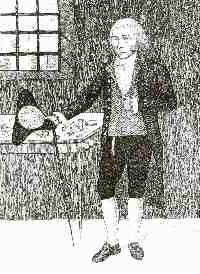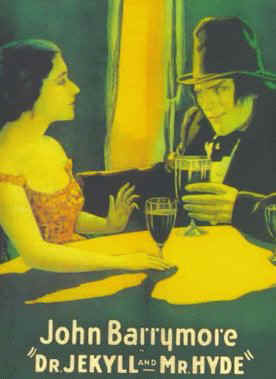A greatly respected member of Edinburgh‘s society, William Brodie (1741-88) was a skilful cabinet-maker and a member of the Town Council as well as deacon (head) of the Incorporation of Wrights and Masons. However, unknown to most gentlefolk, Brodie had a secret night-time occupation as the leader of a gang of burglars. An extra-curricular activity that was necessary to support his extravagant lifestyle which included two mistresses, numerous children and a gambling habit.
 To support his night-time activities Brodie had the perfect day job, part of which involved making and repairing security locks and mechanisms. The temptation obviously proved too much for him when working on the locks of his customer’s houses, as he would copy their door-keys! This would allow him and his three accomplices in crime, Brown, Smith and Ainslie, to return at a later date to steal from them at leisure.
To support his night-time activities Brodie had the perfect day job, part of which involved making and repairing security locks and mechanisms. The temptation obviously proved too much for him when working on the locks of his customer’s houses, as he would copy their door-keys! This would allow him and his three accomplices in crime, Brown, Smith and Ainslie, to return at a later date to steal from them at leisure.
Brodie’s last crime and ultimate downfall was an armed raid on His Majesty’s Excise Office in Chessel’s Court, on the Canongate. Although Brodie had planned the burglary himself, things went disastrously wrong. Ainslie and Brown were caught and turned King’s Evidence on the rest of the gang. Brodie escaped to the Netherlands, but was arrested in Amsterdam and returned to Edinburgh for trial.
The trial started on 27 August 1788, however little hard evidence could be found to incriminate Brodie. That was, until a search of his house revealed the tools of his illicit trade. The jury found both Brodie and Smith guilty and their execution was set for 1 October 1788.
Brodie was hanged at the Tolbooth with his accomplice George Smith, the demon grocer. However, Brodie’s story does not quite end there. He had bribed the hangman to ignore a steel collar he was wearing with the hope this would defeat the noose! But despite the arrangement he made to have his body quickly removed following the hanging, he could not be revived.
The final irony was that Brodie was hanged from a gibbet, which he himself had only recently redesigned. He proudly boasted to the crowd that the gallows upon which he was about to die was the most efficient of its kind in existence. Brodie was buried in an unmarked grave at the Parish Church in Buccleuch.
It is said that Brodie’s bizarre double-life inspired Robert Louis Stevenson, whose father had had furniture made by Brodie. Stevenson included aspects of Brodie’s life and character in his story of a split personality, ‘The Strange Case of Dr. Jeckyll and Mr. Hyde’.








